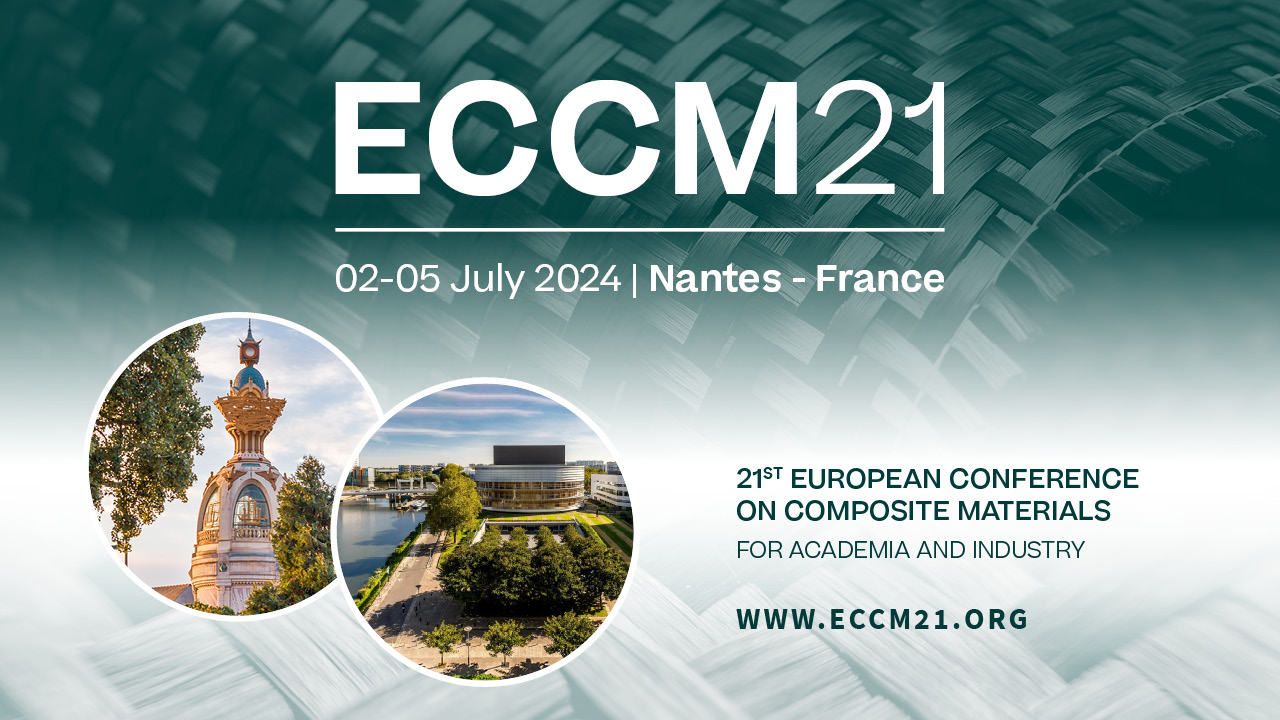Composite structures for demisability during space re-entry
Topic(s) : Experimental techniques
Co-authors :
Alexandre LOOTEN (SWITZERLAND), Muriel RICHARD , Antonio CAIAZZO , Adam PAGAN , Georg HERDRICH , Véronique MICHAUD (SWITZERLAND)Abstract :
From the recent awareness of the booming number of space debris in combination to the worldwide threat due to incomplete disintegration of space objects during space re-entry, mitigation measures must be implemented in the design of future orbital elements.
Through a Network Partnering Initiative (NPI) initiated by EPFL and ESA, the presented work focuses on developing novel composite materials to enhance the spacecraft overall demisability during its destructive atmospheric re-entry, compared to baseline critical systems. The objective is to ensure that spacecraft structures disintegrate at high altitudes, exposing all components to the increasing aerothermodynamic heat flux, while maintaining mission-relevant properties.
Currently, only two types of materials are used for structural sandwich panel facesheets: aluminum and Carbon Fiber Reinforced Composites (CFRP). While aluminum is demisable, CFRP, despite higher specific structural properties, do not effectively demise during re-entry as the carbon fibers keep their integrity and act as a thermal shield. We thus explored the replacement of the skins’ material by solutions with equivalent bending properties as compared to an aluminum benchmark, following three possible routes: (i) a hybrid reinforcement of carbon and demisable flax fibers, (ii) integration of thermally conductive and reactive metallic matrix filler composed of aluminum-magnesium alloy micro-powder into the composite laminate, and (iii) utilization of adapted CFRP with discontinuous fibers achieved through a specific cut-pattern in the prepregs.
Demisability assessment included material and lab-scale evaluations. This involved measuring mechanical properties under static and dynamic loading, determining softening points across temperature ranges. Re-entry simulation tests, conducted via a laboratory-scale high-temperature creep test and high-fidelity plasma wind tunnel, assessed thermo-mechanico-physical property changes under typical uncontrolled re-entry conditions, focusing on material break-up points and composites’ characteristic degradation behavior.
Promising solutions emerged from our study: a ply-by-ply carbon-flax hybrid/epoxy exhibited significant improvements with respectively a 180% ablation rate improvement starting at a lower temperature as compared to CFRP, while maintaining equivalent specific bending modulus to aluminum. The addition of 1 wt%-to-resin AlMg filler enhanced matrix pyrolysis rate by more than 10% and reduced its onset temperature. Preliminary investigation into prepregs with discontinuous carbon fibers also displayed promising results, showing early separation of the plies at the cuts due to the low-temperature degradation of the matrix material.
In conclusion, our research highlights diverse approaches to develop high-performance demisable composite materials and underscores the importance of dedicated evaluation methods in ensuring a safe and sustainable space environment.
Through a Network Partnering Initiative (NPI) initiated by EPFL and ESA, the presented work focuses on developing novel composite materials to enhance the spacecraft overall demisability during its destructive atmospheric re-entry, compared to baseline critical systems. The objective is to ensure that spacecraft structures disintegrate at high altitudes, exposing all components to the increasing aerothermodynamic heat flux, while maintaining mission-relevant properties.
Currently, only two types of materials are used for structural sandwich panel facesheets: aluminum and Carbon Fiber Reinforced Composites (CFRP). While aluminum is demisable, CFRP, despite higher specific structural properties, do not effectively demise during re-entry as the carbon fibers keep their integrity and act as a thermal shield. We thus explored the replacement of the skins’ material by solutions with equivalent bending properties as compared to an aluminum benchmark, following three possible routes: (i) a hybrid reinforcement of carbon and demisable flax fibers, (ii) integration of thermally conductive and reactive metallic matrix filler composed of aluminum-magnesium alloy micro-powder into the composite laminate, and (iii) utilization of adapted CFRP with discontinuous fibers achieved through a specific cut-pattern in the prepregs.
Demisability assessment included material and lab-scale evaluations. This involved measuring mechanical properties under static and dynamic loading, determining softening points across temperature ranges. Re-entry simulation tests, conducted via a laboratory-scale high-temperature creep test and high-fidelity plasma wind tunnel, assessed thermo-mechanico-physical property changes under typical uncontrolled re-entry conditions, focusing on material break-up points and composites’ characteristic degradation behavior.
Promising solutions emerged from our study: a ply-by-ply carbon-flax hybrid/epoxy exhibited significant improvements with respectively a 180% ablation rate improvement starting at a lower temperature as compared to CFRP, while maintaining equivalent specific bending modulus to aluminum. The addition of 1 wt%-to-resin AlMg filler enhanced matrix pyrolysis rate by more than 10% and reduced its onset temperature. Preliminary investigation into prepregs with discontinuous carbon fibers also displayed promising results, showing early separation of the plies at the cuts due to the low-temperature degradation of the matrix material.
In conclusion, our research highlights diverse approaches to develop high-performance demisable composite materials and underscores the importance of dedicated evaluation methods in ensuring a safe and sustainable space environment.

